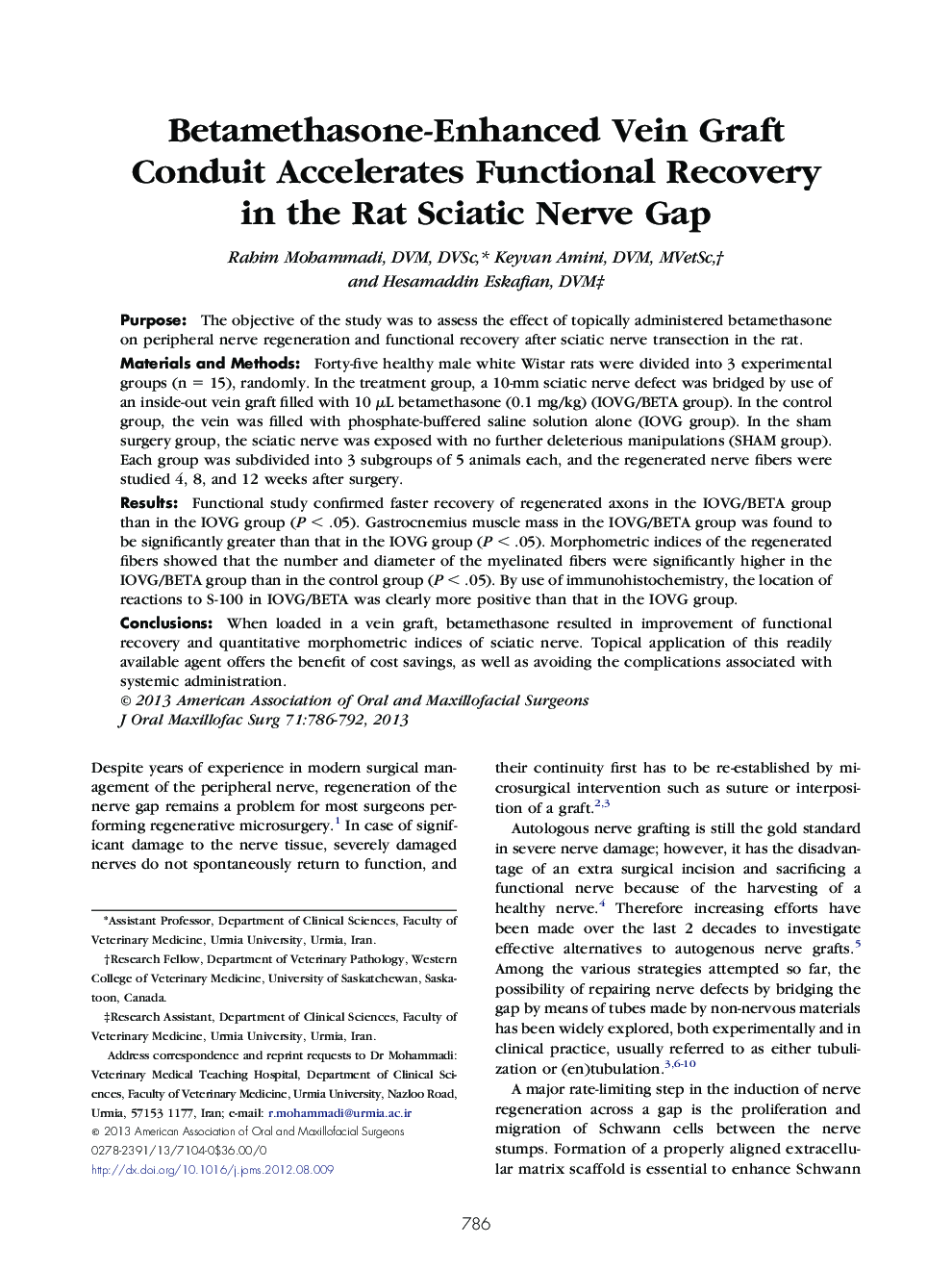| Article ID | Journal | Published Year | Pages | File Type |
|---|---|---|---|---|
| 3156583 | Journal of Oral and Maxillofacial Surgery | 2013 | 7 Pages |
PurposeThe objective of the study was to assess the effect of topically administered betamethasone on peripheral nerve regeneration and functional recovery after sciatic nerve transection in the rat.Materials and MethodsForty-five healthy male white Wistar rats were divided into 3 experimental groups (n = 15), randomly. In the treatment group, a 10-mm sciatic nerve defect was bridged by use of an inside-out vein graft filled with 10 μL betamethasone (0.1 mg/kg) (IOVG/BETA group). In the control group, the vein was filled with phosphate-buffered saline solution alone (IOVG group). In the sham surgery group, the sciatic nerve was exposed with no further deleterious manipulations (SHAM group). Each group was subdivided into 3 subgroups of 5 animals each, and the regenerated nerve fibers were studied 4, 8, and 12 weeks after surgery.ResultsFunctional study confirmed faster recovery of regenerated axons in the IOVG/BETA group than in the IOVG group (P < .05). Gastrocnemius muscle mass in the IOVG/BETA group was found to be significantly greater than that in the IOVG group (P < .05). Morphometric indices of the regenerated fibers showed that the number and diameter of the myelinated fibers were significantly higher in the IOVG/BETA group than in the control group (P < .05). By use of immunohistochemistry, the location of reactions to S-100 in IOVG/BETA was clearly more positive than that in the IOVG group.ConclusionsWhen loaded in a vein graft, betamethasone resulted in improvement of functional recovery and quantitative morphometric indices of sciatic nerve. Topical application of this readily available agent offers the benefit of cost savings, as well as avoiding the complications associated with systemic administration.
